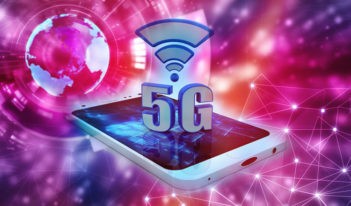As 5G begins its rollout over 2019, 5G broadband will be one of the first major consumer-facing applications.
But then, will these mobile-focused home and business broadband services actually turn out to be a viable alternative to the existing fixed broadband standard? This post runs through the merits of 5G broadband.
First things first, let’s define what, exactly, we mean by a 5G broadband.
What a 5G broadband, actually, means
We understand that standard broadband includes a series of physical connections. In general, this consists of fixed fiber lines connecting an exchange to a cabinet within a specific radius of your property, and then involves more of physical cabling (often copper but ideally fiber) from there to your home.
‘5G broadband’ can be a touch misleading term, as such, since it seems to indicate a switch to an entirely wireless broadband solution. However, this isn’t clearly accurate.
What a 5G broadband (also known as 5G Fixed Wireless Access, or simply an FWA) will actually do is substitute that ‘last mile’ physical connection with a strictly wireless 5G network connection. Most of these 5G networks will adopt largely the same type of physical fiber connections as involved in standard fixed broadband.
The last mile roadblock
At present, the ‘last mile’ of standard broadband connection is a priority concern due to its complexity. It can consume a lot of money and efforts fitting high-speed fiber optic cable from the cabinet to a certain property.
This is the reason many enterprises continue to use conventional and old-school copper connections in numerous locations. This turns out to be a bit of roadblock when we talk about potential broadband performance.
5G broadband network would make sure that this last stretch is no longer the weakest, complex, or problematic point. A recent Ovum report estimates that large-scale 5G broadband adoption would constantly support average speeds of 80 to 100 Mbps.
That’s nearly as fast as the fastest fixed broadband package deployed in major US cities.
5G broadband will be more seamlessly fast
The fastest large-scale fixed broadband packages are, more often than not, restricted to state capitols, large cities, towns, and big enterprises. The logistics of linking up premises with fiber connectivity means that more sparsely populated or remote regions have to make do with sub-par broadband networks, for the most part.
The speed of 5G broadband may only match instead of surpassing those of the existing speeds of top-end fixed broadband, at about 80Mbps. However, only 18% of the US enjoys such speeds at present, and nearly 15mn US premises are getting speeds below 10Mbps.
All 5G broadband networks need to achieve those high speeds is a single reliable and efficient physical connection to the region and the required 5G infrastructure. It will be available in the form of small, easy-to-install base stations dotted around on top of buildings and on street furniture.
As such, it’s not that 5G broadband speeds will be higher as compared to fixed broadband, then, but that they will be higher for more consumers and readily available in different parts of the US.
5G broadband network will be cheaper
The advantages of 5G broadband, or 5G FWA, over the current fixed broadband are not merely about speed. Another essential advantage to the 5G broadband network will be its low cost.
Consumers will no longer need to hire an engineer to physically hook their property up with high-speed cabling. Nor will service providers have the burden of paying massive civil engineering costs for operations such as digging up roads to installing cables. In fact, it’s projected that 5G broadband will cost providers half as much to install.
5G broadband will be plug and play, i.e. extremely user-friendly and easy-to-use, in fact as easy as plugging in a wifi router. 5G broadband providers will be able to provide user-friendly instructions in the form of installation manual or brochure for self-installation instead of paying a technician to visit, as generally is the case with the fixed broadband offerings from leading providers across the US.
Those substantial savings will inexorably be passed on to the consumer. Ovum forecasts that 5G broadband service will be able to save families around $240 on annual line rental costs, alone.
In addition, contract lengths will be shorter, since operators will need not to recoup any installation charges. The ease to switch more often will likely provide a more competitive and consumer-first broadband landscape.
When to expect to see 5G in play?
Given these obvious and massive advantages, how will we know when, and if, telecom enterprises will adopt 5G broadband?
No second thought, until 5G begins to roll out in 2019 and 2020, everything is theoretical. On the other hand, fixed broadband is a known thing, which is getting better and better all the time (albeit slowly).
Well then, how do we know that a 5G broadband network will actually become a real quantity? Because the global market has already started shifting its momentum in that direction, and the investment flowing in is massive in the kind of equipment that will be required to transform 5G broadband into a reality.
As Ovum recently reported, “Virtually all suppliers of telecom equipment have demonstrated their 5G-FWA equipment”.
It’s no mystery that large-scale network operators and telecommunications equipment enterprises have stepped up investments in 5G broadband trials over the last year. Numerous companies, including Verizon, have already committed to delivering a commercial 5G broadband service in 2019. Three in UK and O2 in Germany have also committed to providing 5G broadband networks this year.
Therefore, it is evident that efforts towards 5G broadband adoption are happening all over the world, not just in the US. So be sure it’s coming soon enough.

